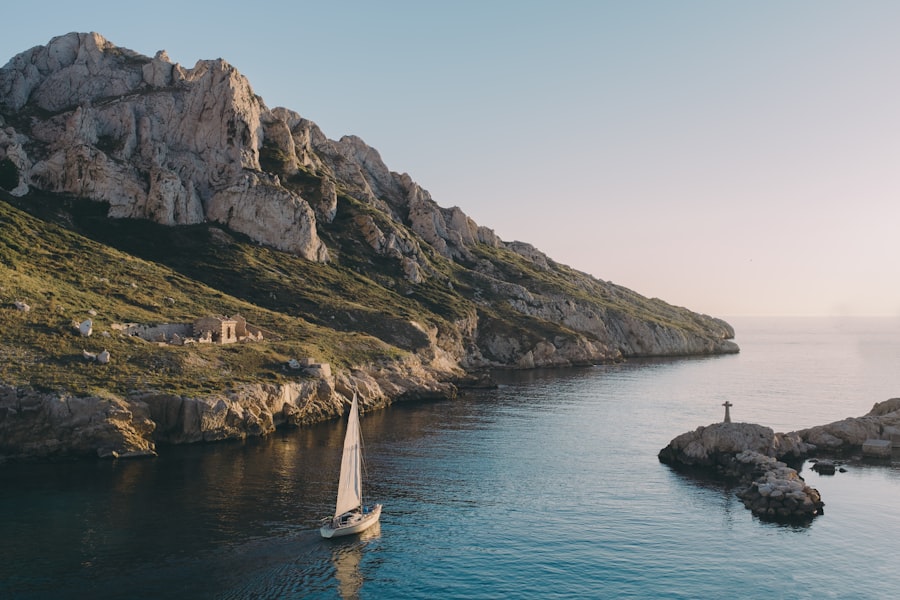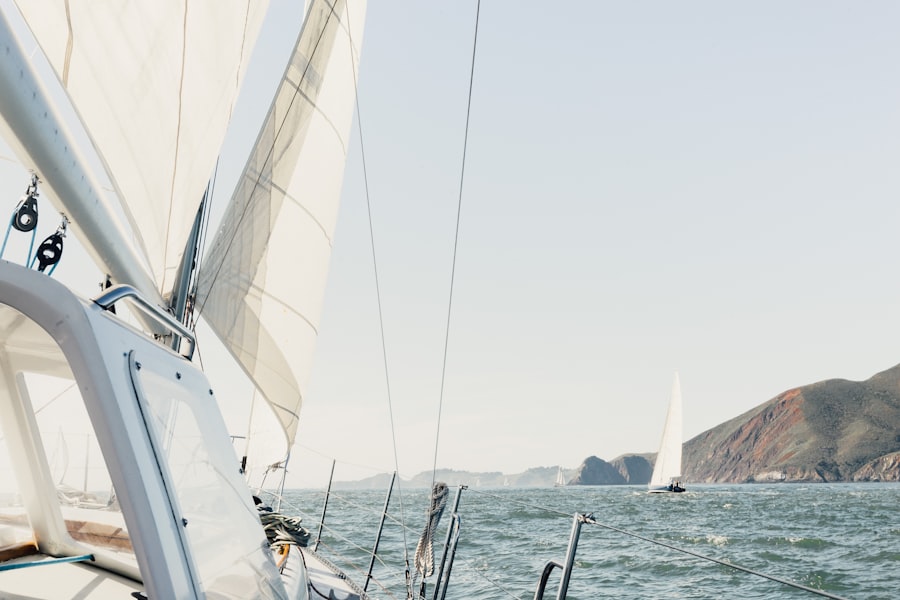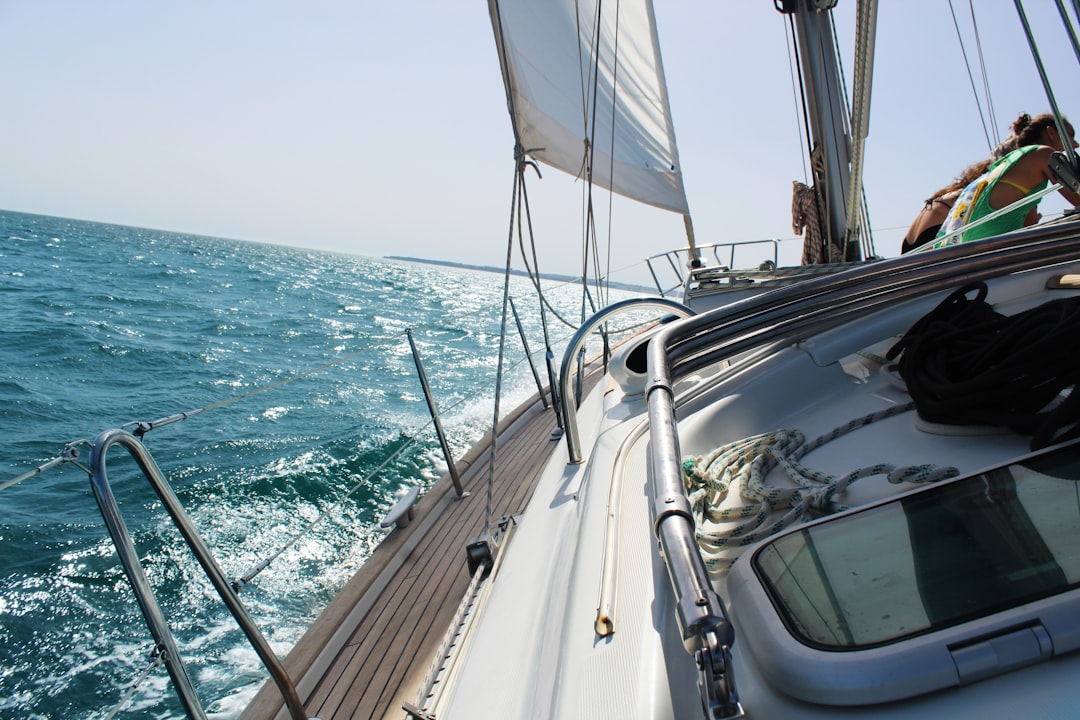The Drake Passage, a body of water that separates South America from Antarctica, is renowned for its tumultuous seas and unpredictable weather. Named after the English explorer Sir Francis Drake, who navigated these waters in the late 16th century, the passage has become a focal point for adventurers, researchers, and maritime enthusiasts alike. Stretching approximately 600 kilometers (370 miles) at its widest point, the Drake Passage serves as a critical conduit for ocean currents and plays a significant role in the global climate system.
Its reputation as one of the most challenging maritime routes has only added to its allure, drawing those who seek to experience its raw beauty and formidable nature. The passage is not merely a geographical feature; it is a gateway to one of the most pristine and remote regions on Earth. The waters are often characterized by their choppy waves and strong currents, making navigation a daunting task.
However, for many, the thrill of crossing the Drake Passage is an adventure of a lifetime. The journey offers a unique opportunity to witness the convergence of two major oceanic systems—the Atlantic and Pacific Oceans—creating a dynamic environment that is both awe-inspiring and treacherous.
Key Takeaways
- The Drake Passage is a body of water between South America’s Cape Horn and the South Shetland Islands of Antarctica.
- The Drake Passage is the shortest route from the Atlantic to the Pacific and is known for its strong winds and currents, making it a significant geographical feature.
- The Drake Passage has a rich historical significance, as it was first crossed by Sir Francis Drake in 1578 and has been a key route for explorers and scientists.
- The weather and climate conditions in the Drake Passage are characterized by strong winds, rough seas, and rapidly changing weather patterns.
- The Drake Passage is home to a diverse range of wildlife and marine life, including penguins, seals, whales, and various seabird species.
Understanding the geographical significance of the Drake Passage
Geographically, the Drake Passage holds immense significance as it connects the Atlantic and Pacific Oceans. This narrow stretch of water is not only a vital link for maritime traffic but also plays a crucial role in regulating oceanic currents. The passage facilitates the flow of the Antarctic Circumpolar Current, which encircles Antarctica and influences global climate patterns.
This current is responsible for transporting cold water from the Southern Ocean northward, impacting weather systems far beyond its immediate vicinity. The unique positioning of the Drake Passage also contributes to its ecological importance. The mixing of warm and cold waters creates nutrient-rich upwellings that support diverse marine ecosystems.
These conditions foster an abundance of marine life, making the passage a critical habitat for various species. The geographical features of the passage, including its depth and topography, further enhance its role as a significant marine corridor, influencing both local and global biodiversity.
Historical significance of the Drake Passage

Historically, the Drake Passage has been a site of exploration and discovery since the Age of Exploration. Sir Francis Drake’s voyage in 1578 marked one of the first recorded crossings of this treacherous waterway, paving the way for future explorers and navigators. His journey not only demonstrated the potential for maritime trade routes but also highlighted the challenges posed by the unpredictable nature of the passage.
Over the centuries, numerous expeditions have traversed these waters, each contributing to our understanding of navigation, geography, and oceanography. The passage has also played a pivotal role in scientific research and environmental studies. In the 20th century, it became a focal point for oceanographic research, with scientists studying its unique currents and ecosystems.
The historical significance of the Drake Passage extends beyond exploration; it has become a symbol of human resilience and curiosity in the face of nature’s formidable challenges. As researchers continue to study this vital waterway, they uncover insights that inform our understanding of climate change and its impact on marine environments.
Weather and climate conditions in the Drake Passage
| Month | Average Temperature (°C) | Wind Speed (km/h) | Precipitation (mm) |
|---|---|---|---|
| January | 5 | 35 | 80 |
| February | 5 | 35 | 90 |
| March | 4 | 35 | 100 |
| April | 2 | 35 | 110 |
| May | 0 | 35 | 120 |
| June | -2 | 35 | 130 |
The weather conditions in the Drake Passage are notoriously volatile, characterized by rapid changes that can occur within minutes. The region is influenced by strong winds, particularly the infamous “Roaring Forties,” which are prevalent in the southern latitudes. These winds can generate towering waves and create hazardous conditions for vessels navigating through the passage.
The combination of cold Antarctic air and warmer ocean currents contributes to frequent storms and fog, further complicating navigation. Seasonal variations also play a significant role in shaping the climate of the Drake Passage. During the summer months (November to March), temperatures are relatively milder, attracting more vessels and tourists eager to experience its beauty.
However, even in summer, conditions can be unpredictable, with sudden storms capable of arising without warning. In contrast, winter months bring harsher weather patterns, with freezing temperatures and increased ice presence posing additional challenges for navigation. Understanding these climatic nuances is essential for anyone planning to traverse this formidable waterway.
Wildlife and marine life in the Drake Passage
The Drake Passage is home to an astonishing array of wildlife and marine life, making it one of the most biodiverse regions in the world. The nutrient-rich waters support a variety of species, including krill, which serves as a crucial food source for larger marine animals such as whales, seals, and seabirds. The presence of these species highlights the ecological importance of the passage as a feeding ground for migratory animals.
Among the most iconic inhabitants of the Drake Passage are several species of whales, including humpback whales, orcas, and blue whales. These majestic creatures migrate through these waters in search of food during specific seasons. Additionally, seabirds such as albatrosses and petrels can often be seen soaring above the waves, taking advantage of the strong winds that characterize this region.
The rich biodiversity found in the Drake Passage not only captivates wildlife enthusiasts but also underscores the importance of conservation efforts to protect these fragile ecosystems.
Navigational challenges and risks in the Drake Passage

Navigating through the Drake Passage presents numerous challenges and risks that require careful consideration from mariners. The unpredictable weather patterns can lead to sudden storms and rough seas, making it essential for vessels to be well-prepared for changing conditions. The strong currents that flow through the passage can also create hazardous situations for ships, particularly smaller vessels that may struggle against powerful waves.
In addition to natural challenges, navigational hazards such as icebergs and submerged rocks pose significant risks to vessels traversing these waters. Icebergs calving from glaciers can drift into shipping lanes, creating potential collisions that could endanger both crew and cargo. Mariners must remain vigilant and utilize advanced navigation technology to ensure safe passage through this treacherous region.
Understanding these risks is crucial for anyone planning to navigate the Drake Passage.
Safety measures and precautions for navigating the Drake Passage
Given the inherent dangers associated with crossing the Drake Passage, implementing safety measures is paramount for ensuring a successful journey. Mariners are advised to conduct thorough pre-voyage preparations, including detailed route planning that accounts for weather forecasts and potential hazards. Utilizing modern navigation tools such as GPS and radar can significantly enhance situational awareness while at sea.
Additionally, vessels should be equipped with safety gear such as life rafts, emergency beacons, and communication devices to facilitate rescue operations if necessary. Crew training is equally important; ensuring that all personnel are familiar with emergency procedures can make a critical difference in high-stress situations. By prioritizing safety measures and precautions, mariners can mitigate risks associated with navigating this challenging waterway.
Popular routes and destinations in the Drake Passage
The Drake Passage serves as a gateway to some of the most breathtaking destinations on Earth, particularly for those venturing to Antarctica. One popular route includes travel from Ushuaia, Argentina—the southernmost city in the world—across the passage to various Antarctic destinations such as Deception Island or Paradise Bay. These routes offer travelers an opportunity to witness stunning landscapes while experiencing firsthand the unique wildlife that inhabits these remote regions.
Another notable destination accessible via the Drake Passage is King George Island, which serves as a hub for scientific research and tourism alike. Visitors can explore research stations while enjoying breathtaking views of glaciers and ice formations. The passage itself becomes part of an unforgettable journey as travelers navigate its unpredictable waters en route to these remarkable locations.
Tips for preparing for a journey through the Drake Passage
Preparing for a journey through the Drake Passage requires careful planning and consideration of various factors. First and foremost, travelers should research their chosen route thoroughly, paying close attention to seasonal weather patterns that may affect their journey. Packing appropriate clothing is essential; layers are recommended to accommodate fluctuating temperatures while at sea.
Additionally, travelers should ensure they have all necessary travel documents in order before embarking on their adventure. It is also advisable to consult with experienced tour operators who specialize in Antarctic expeditions; their expertise can provide valuable insights into navigating both the passage itself and any potential challenges that may arise during travel.
The experience of crossing the Drake Passage
Crossing the Drake Passage is often described as both exhilarating and daunting—a true test of one’s mettle against nature’s forces. As vessels set sail from Ushuaia into these turbulent waters, passengers may experience a mix of excitement and apprehension about what lies ahead. The journey typically takes around two days; during this time, travelers are treated to stunning views of vast ocean expanses while keeping an eye out for wildlife sightings.
While some may encounter rough seas that challenge their sea legs, others find solace in witnessing nature’s raw power firsthand.
Ultimately, crossing the Drake Passage becomes more than just a physical journey; it transforms into an unforgettable adventure filled with awe-inspiring moments that leave lasting impressions on all who dare to traverse its waters.
Conclusion and final thoughts on navigating the treacherous Drake Passage
In conclusion, navigating the Drake Passage is an endeavor that embodies both challenge and reward. Its geographical significance as a connector between two major oceans underscores its importance in global climate systems while offering unparalleled opportunities for exploration and discovery. The historical context surrounding this waterway adds depth to its allure; countless adventurers have braved its waters throughout history in pursuit of knowledge and adventure.
As travelers prepare to embark on their journeys through this formidable passageway, understanding its weather patterns, wildlife diversity, navigational challenges, safety measures, and popular routes becomes essential for ensuring a successful experience. Ultimately, crossing the Drake Passage is not merely about reaching a destination; it is about embracing an adventure that tests one’s limits while revealing nature’s breathtaking beauty in all its forms. For those who dare to navigate these treacherous waters, memories are forged that will last a lifetime—a testament to human resilience against nature’s might.
Sailing through the Drake Passage is often considered one of the most challenging maritime routes due to its unpredictable weather and strong currents. This treacherous stretch of water, located between the southern tip of South America and Antarctica, is a rite of passage for adventurous sailors and explorers. For those interested in learning more about the geographical significance and the adventurous spirit of navigating these waters, you can explore a related article on the topic by visiting this page. This article delves into the history and challenges of the Drake Passage, offering insights into why it remains a formidable journey for even the most seasoned sailors.
WATCH HERE: Drake Passage: Earth’s Deadliest Waters Revealed
FAQs
What is the Drake Passage?
The Drake Passage is the body of water between the southern tip of South America and the northern tip of the Antarctic Peninsula. It is known for its rough seas and challenging sailing conditions.
Why is sailing the Drake Passage considered challenging?
Sailing the Drake Passage is considered challenging due to its strong winds, large waves, and unpredictable weather. The convergence of the Atlantic, Pacific, and Southern oceans also contributes to the rough conditions.
What is the best time of year for sailing the Drake Passage?
The best time for sailing the Drake Passage is during the austral summer, from November to March, when the weather is relatively milder and the sea conditions are more favorable.
What are the attractions of sailing the Drake Passage?
Sailing the Drake Passage offers the opportunity to experience the remote and pristine wilderness of Antarctica, observe diverse wildlife, including penguins, seals, and whales, and witness breathtaking landscapes of icebergs and glaciers.
What type of vessels are used for sailing the Drake Passage?
Expedition cruise ships and sailing yachts are commonly used for sailing the Drake Passage. These vessels are equipped to handle the challenging conditions and provide comfortable accommodations for passengers.
